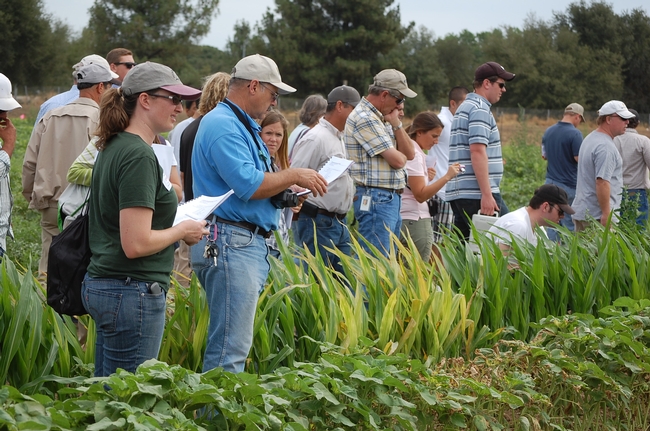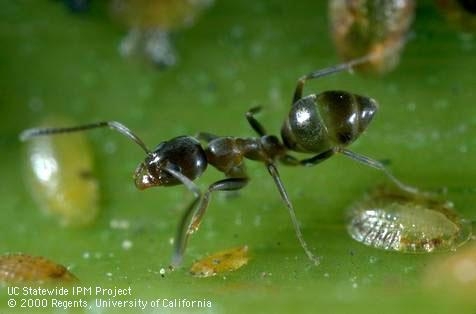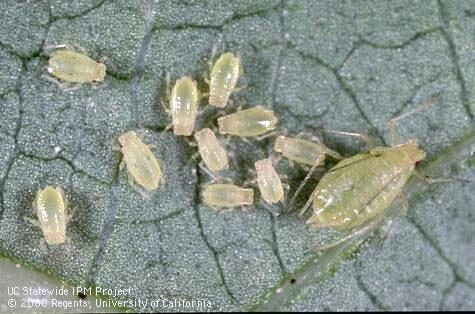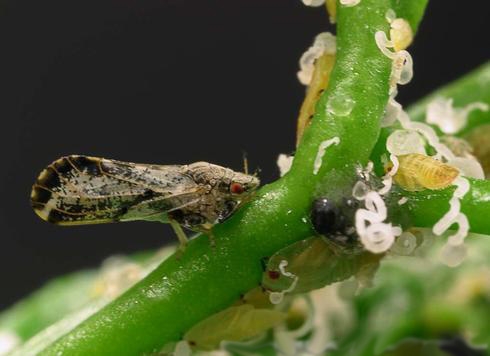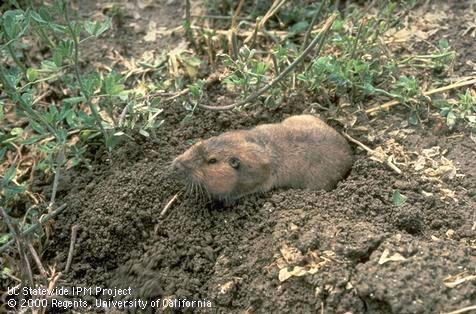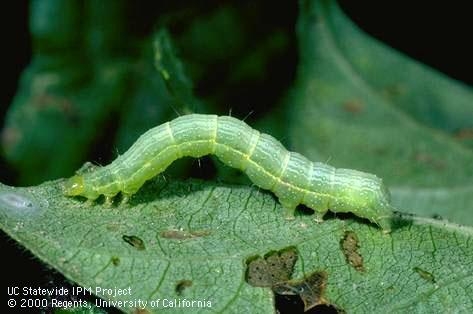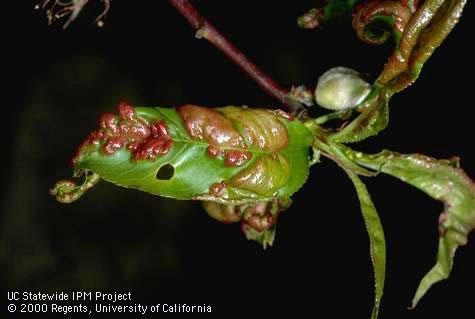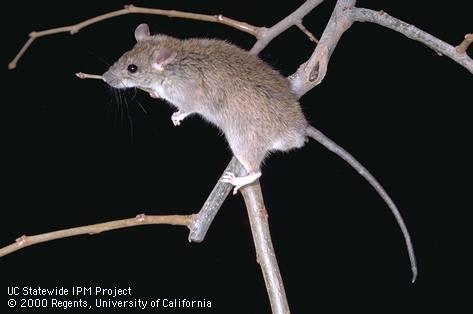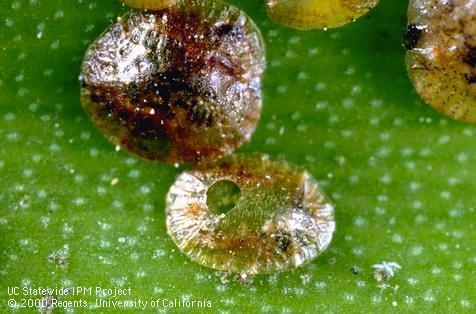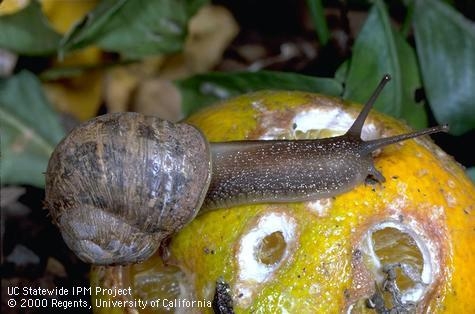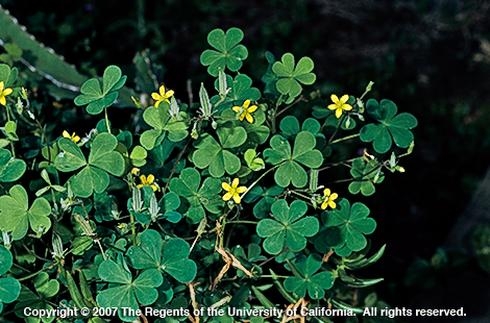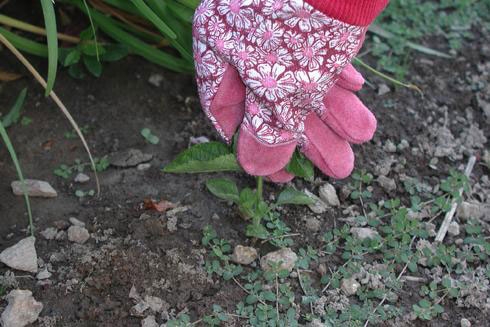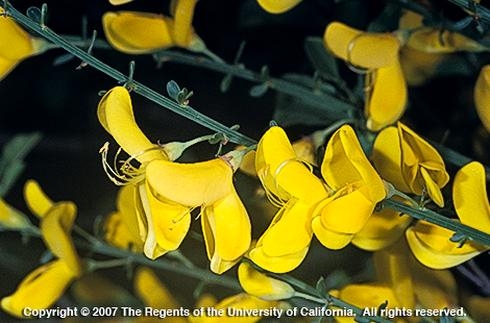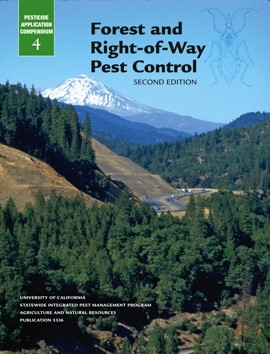Posts Tagged: weeds
Root out weed problems with upcoming courses at UC Davis
Weeds are a pervasive and expensive problem in California. They can choke waterways, crowd out native species on rangeland, and rob farmers of crop yields. According to the California Invasive Plant Council, the annual cost of invasive plant work in California is at least $82 million.
The University of California has robust educational resources to help those engaged in the battle, and this summer UC Davis and UC Agriculture and Natural Resources personnel are offering a trio of programs to help in the effort.
Weed Day: July 7, 2016
The 60th annual Weed Day will be held at UC Davis on July 7 from 8 a.m. to 4:30 p.m. The program gets under way in the Buehler Alumni Center.
Weed Day will be of interest to pest control advisers, chemical company cooperators, faculty, students and regulatory officials. It is an opportunity to learn about the latest research and to visit current weed-control field trials. The event begins with a bus tour to the research plots. Following lunch, staff and students will present information on projects that are either not in-season or located too far off campus for viewing.
“We have tomatoes, walnuts, and almonds, as well as aquatic research results, and a weed identification quiz,” said professor and UC Cooperative Extension specialist Kassim Al-Khatib, chair of this year's event. “We'll be hearing about control of medusahead, management in grapes, a new herbicide for rice, and many studies on herbicide resistance issues.”
For additional information and to register.
Diagnosing Herbicide Symptoms: July 8, 2016
The Weed Research and Information Center at UC Davis is offering a new course, Diagnosing Herbicide Symptoms, on July 8 at the Bowley Plant Science Teaching Center.
This program will be of interest to pest control advisers, chemical companies, field investigators and insurance adjusters. The course focuses on how an herbicide injury situation can arise, what information can help diagnose herbicide problems during field investigations, and what tools are available.
Topics include herbicide modes of action, symptom development, recovery from herbicide injury, economic damage, and other areas. Instruction takes place in a lecture, field visit, and hands-on demonstrations. Course instructors include UC Cooperative Extension (UCCE) specialists Kassim Al-Khatib and Brad Hanson, UCCE farm advisor John Roncoroni, and Napa County Agricultural Commissioner Greg Clark.
For additional information and to register.
Aquatic Weed School: Sept. 7–8, 2016
The Aquatic Weed School will be held Sept. 7–8 at the Bowley Plant Science Teaching Center.
This intensive course is designed for those involved in consulting, research and management of aquatic weed systems throughout the western United States. Topics include ecological classification and impacts of aquatic weeds, biology of aquatic weeds, physical and chemical characteristics of aquatic ecosystems, regulatory issues, developing an aquatic management plan, aquatic weed identification, equipment demonstration, adjuvants and surfactants for aquatic systems, pest prevention for aquatic weeds, physical and mechanical control methods, biological control, chemical and non-chemical control, and a case study of a complex management plan.
For additional information and to register.
Need more information? Contact Gale Pérez with the UC Weed Research and Information Center, (530) 752-1748, gperez@ucdavis.edu.
Top 10 pests in gardens and landscapes and how to control them
Download the free booklet at the bottom of the page!
1. Ants
Most people deal with ants around their home at some point. Because most ants live outdoors, focus efforts on keeping ants from entering buildings by caulking entryways. Follow good sanitation practices to make your home less attractive to ants. Spraying ants inside the home will not prevent more ants from entering. Use baits to control the ant colony. Pesticide baits work by attracting worker ants who then take the poison back to the nest where the entire colony, including queens, can be killed. In the landscape, ants protect honeydew-producing pest insects from predators, so use sticky barriers or insecticide baits to keep ants out of trees and shrubs.
- Find out more at http://www.ipm.ucanr.edu/QT/antscard.html
2. Aphids
Aphids can curl leaves and produce sticky honeydew, but they rarely kill plants and you usually can wash them off with water. When aphid numbers get high, natural enemies such as lady beetles (lady bugs), lacewings, syrphid fly larvae, soldier beetles and others frequently feed on them, eliminating the need for pesticides. Protect these good bugs by avoiding the use of insecticides that can be toxic to a broad variety of insects. Ants protect aphids from these natural enemies, so keep ants away from your garden as well. When pesticides are necessary, use less toxic products such as insecticidal soaps and oils.
- Learn more about controlling aphids here: http://www.ipm.ucanr.edu/QT/aphidscard.html
3. Asian citrus psyllid and Huanglongbing disease
The Asian citrus psyllid (ACP) and the deadly bacterial disease it spreads, Huanglongbing (HLB), threaten citrus trees in backyards and on farms. There is no cure or effective control method for HLB disease. All types of citrus—including oranges, grapefruit, lemons, and mandarins—are affected as well as a few closely related ornamentals. ACP and HLB have already devastated the Florida citrus industry, and now that it is in the Western U.S. it is threatening the California citrus industry as well.
- See where the outbreaks are in California with our helpful Asian citrus psyllid website: http://ucanr.edu/sites/ACP/Distribution_of_ACP_in_California/
- Contact your agricultural commissioner's office, or call the California Department of Food and Agriculture (CDFA) Exotic Pest Hotline at 1-800-491-1899 to confirm a find. Learn more about ACP here: http://www.ipm.ucanr.edu/QT/asiancitruscard.html
4. Gophers
Gophers are small burrowing rodents that feed on roots of many types of plants. A single gopher can ruin a garden in a short time, and gopher gnawing can damage irrigation lines and sprinkler systems. In lawns, their mounds are unsightly and interfere with mowing. Early detection is critical to prevent damage. Use both traps and underground fencing to manage gopher problems. Toxic baits are available but can pose threats to wildlife, pets, and children, especially in backyard situations.
- Learn more about protecting your garden and landscape from gophers here: http://www.ipm.ucanr.edu/QT/gopherscard.html
5. Leaf-feeding caterpillars
Caterpillars, which are the larvae of butterflies and moths, damage plants by chewing on leaves, flowers, shoots, and fruit. Caterpillars in fruit or wood can be difficult to manage because they are hidden most of their life and can cause serious damage even when numbers are low. However, many plants, especially perennials, can tolerate substantial leaf damage, so a few leaf-feeding caterpillars often aren't a concern. Handpicking and beneficial predators and parasites often provide sufficient control. Look for feeding holes, excrement, webbed or rolled leaves, caterpillars, eggs, and good bugs.
- Learn more here:http://www.ipm.ucanr.edu/QT/lfcaterpillarscard.html
6. Peach leaf curl
Peach leaf curl is a fungal disease that affects only peach and nectarine trees. Distorted, reddened foliage in the spring is a distinctive symptom. New leaves and shoots thicken and pucker and later may die and fall off. An infection that continues untreated for several years can lead to a tree's decline. To prevent peach leaf curl, treat peach and nectarine trees with a copper fungicide every year after leaves fall. After symptoms appear in the spring, any treatment will not be effective. When planting new trees, consider buying peach tree varieties that are resistant to the disease.
- To learn more about preventing peach leaf curl click here: http://www.ipm.ucanr.edu/QT/peachleafcurlcard.html
7. Rats
Rats eat and contaminate food, garden produce, and fruit, and transmit diseases to humans and pets. Manage rats by removing food and shelter, eliminating entryways into buildings, and trapping. Snap traps are the safest, most effective, and most economical way to trap rats. For Norway rats, place traps close to walls, behind objects, in dark corners, and in places where you have found rat droppings. For roof rats, place traps in off-the-ground locations such as ledges, shelves, branches, fences, pipes, or overhead beams. Ensure traps are out of reach of children and pets.
- Learn more about preventing and controlling rats here: http://www.ipm.ucanr.edu/QT/ratscard.html
8. Scales
Scale insects suck plant juices and are pests of many trees and shrubs. Infestations can cause yellowing or premature dropping of leaves, sticky honeydew, and blackish sooty mold. Plant parts can distort or die back, depending on the species and abundance of scales. Most plants tolerate low to moderate numbers of scales. Provide plants with proper cultural care, especially irrigation. Encourage scale predators such as lady beetles or lacewings and look for parasite emergence holes in scale covers. Use sticky barriers or insecticide baits to selectively control scale-tending ants. Consider replacing problem-prone plants because most scales are highly specific to certain plants.
- Learn more about controlling scale populations here: http://www.ipm.ucanr.edu/QT/scalescard.html
9. Snails and slugs
These slimy mollusks emerge from hiding at night and chew holes in leaves and flowers of many succulent garden plants and fruit. Management requires a vigilant and integrated approach that includes eliminating moisture and hiding spots, trapping, setting up barriers, and handpicking. Regularly remove snails from shelters you can't eliminate such as low ledges on fences, undersides of decks, and meter boxes. Place traps in your garden and dispose of trapped snails and slugs daily. Reduce moist surfaces by switching to drip irrigation or watering in the morning rather than later in the day. Consider snail-proof plants such as impatiens, geraniums, begonias, lantana, nasturtiums, and many plants with stiff leaves and highly scented foliage such as sage, rosemary, and lavender.
- Learn more about controlling snails and slugs with and without pesticides in your garden here: http://www.ipm.ucanr.edu/QT/snailsslugscard.html
10. Weeds in landscapes
Prevent weed invasions in new beds with good site preparation. Keep weeds out with an integrated program that includes competitive plants, mulches, and hand removal. Be particularly vigilant about removing aggressive perennial weeds. You rarely should need herbicides in established landscape plantings. Mulches prevent weed seed germination by blocking sunlight. Remove small weeds by hand before they flower and set seed. Use shallow cultivation or hoeing to remove annual weeds from ornamental plantings. Only use herbicides for special-problem situations before establishing new plantings or for difficult-to-control perennial weeds.
- Learn more about controlling weeds in your landscape here: http://www.ipm.ucanr.edu/QT/landscapeweedscard.html
To see all of the University of California's Statewide Integrated Pest Management Program's information on home, garden, and landscape pests, visit http://www.ipm.ucanr.edu/PMG/menu.homegarden.html
For other short pest “Quick Tips” like the ten above, see http://www.ipm.ucanr.edu/QT/
To read even more in-depth, peer-reviewed information on many other common home and landscape pests in California, see the Pest Notes series at http://www.ipm.ucanr.edu/PMG/PESTNOTES/index.html
Download your free UC IPM Quick Tips Booklet of the Top Ten Pests in Gardens and Landscapes and How to Control Them with the link below!
Control garden weeds in early spring
Wilen recommends home gardeners use a swivel (or hula) hoe to scrape the surface and decapitate weeds. “It's a bit of exercise,” she said, "but you can do it so quickly, it's not a problem.”
Another weed control strategy is a thick layer of mulch, with does double-duty by reducing water evaporation from the soil surface, thereby conserving water. Wilen suggests a three- to four-inch layer of mulch be spread in garden beds and landscape borders before the weed seeds have a chance to germinate. Mulch blocks the sunlight weeds need to push through the ground.
Fabric weed barriers are useful for controlling particularly challenging weeds, like nutsedge. Wilen suggests covering the fabric with mulch for an esthetically pleasing weed-free garden.
Though the common herbicide glyphosate (such as Roundup) kills weeds and is safe if used correctly, Wilen prefers using the swivel hoe. "It's just quicker and easier than pulling out the spray equipment," she said.
New video: Weed out unwanted plants to conserve water
Weeds don't just look unsightly, they are also robbing other plants of water, says a UC Agriculture and Natural Resources (UC ANR) expert in a new water conservation video released today.
Any loss of water is a concern as California's fourth summer of drought comes to a close. Missy Gable, director of the UC Master Gardener Program, suggests removing weeds so they won't compete with ornamental plants or edible vegetables.
If weeds are scattered throughout yard and mixed in with plants, hand-weeding is probably the best eradication method. Cultivation can damage ornamentals with shallow roots, bring weed seeds to the soil surface, and propagate perennial weeds, according to the UC Integrated Pest Management Pest Note on Weed Management in Landscapes.
The new video, posted below, is the third in series of six produced by UC ANR to provide quick and simple tips for reducing water use in home landscapes. The earlier videos in the series, which can be seen on the UC ANR YouTube channel, are:
View the latest video here:
Watch for next week's video to learn the importance of mulch in water conservation.
An initiative to improve California water quality, quantity and security is part of the UC Division of Agriculture and Natural Resources Strategic Vision 2025.
New book helps pros manage invasive weeds in California forests
Beautiful but unwelcome in California wildlands, brooms are shrubs introduced into North America from Europe in the mid-1800s. Common species include Scotch broom (Cytisus scoparius) and Portuguese broom (Cytisus striatus). Brooms were introduced as ornamentals, but also were used extensively for erosion control along roadsides and in mined areas.
Now growing profusely in California forests, on roadsides, and wildlands, brooms:
- Crowd out out desirable vegetation
- Form impenetrable thickets that limit access to some areas
- Shade out tree seedlings, and make reforestation difficult
- Burn readily, increasing the intensity of fire, and carry fire to the tree canopy
- Are toxic to cattle and horses and unpalatable to most wildlife
- Produce abundant, long-lived seed
- Are able to fix atmospheric nitrogen, giving broom a competitive advantage over native plants
Management of these and other weeds are presented in the recently published second edition of Forest and Right-of-Way Pest Control. Invasive species that create a dangerous wildfire hazard and crowd out desirable vegetation and wildlife are examples of why this book emphasizes vegetation management and pesticide handling, including correct equipment calibration and effective herbicide application. The second edition also provides broader coverage of insects, plant pathogens, vertebrate pests, and the various practices to manage them, recognizing that lands commonly have multiple uses and when and how pests are managed depends on many considerations with sometimes conflicting goals.
One of many new features in this edition is a section with expectations and review questions, which will help professionals pass DPR's tough applicator certification examinations. The book may be used as a guide to safe and effective pest management on public and private forests, tree plantations and nurseries, and along roads, railways, utility corridors, biking and hiking trails, and other rights-of-way. Nearly 200 photos and illustrations, 56 tables and sidebars, and 11 main chapters aid in pest identification and problem diagnosis and provide users with pesticide and nonpesticide solutions.
Experts with Cal-Fire, Caltrans, PG&E, USDA Forest Service, private industry, the University of California (UC) Berkeley and Davis campuses, UC County Cooperative Extension offices, and the California Department of Pesticide Regulation (DPR) contributed to Forest and Right-of-Way Pest Control, prepared by UC ANR's Statewide Integrated Pest Management Program.
Forest and Right-of-Way Pest Control is available for $35 online in the UC ANR Catalog. The table of contents and more information about the book are available on the UC IPM website. You can also preview and electronically search the contents on Google Books.


